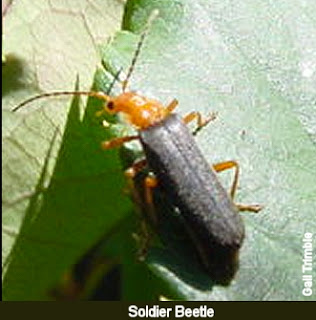Earwigs are a creepy nuisance at times, like when they crawl out
of freshly picked flowers or lettuce heads, but they are not a pest.
A typical earwig. Credit: animal.discovery.com
For several
years in this town, I found that one could not grow a hollyhock to bloom
without it becoming covered with an ugly rust by the time it bloomed. I
would cut them down when they got ugly and let them re-grow to bloom later in
the summer, when the rust is not so prevalent.
But
one year, I didn’t see any rust on my hollyhocks, and so didn’t cut them
down. As they were blooming, I was lying on the lawn one day,
looking up at them, and noticed that the leaves were full of tiny holes in the same
pattern as the rust would make, and so was a butterfly bush. That
evening, I noticed earwigs climbing the butterfly bush as it got dark, and put
two and two together; the earwigs were eating the rust before it made spores
and became colorful.
I had
previously noticed that I had a great many earwigs in my gardens and thought
about various strategies for getting rid of them, though I noticed no damage
that I could attribute to them. Now I realized that they were
actually useful, and stopped worrying about them.
In
Landscape Management at RCC, our teacher pointed out that plant diseases like
rust make typical damage patterns that differ from those caused by plant-eating
pests. After several years of observing such damage, I was able to
see the difference right away between pest damage and fungal damage cleaned up
by earwigs. Since then, I have noticed earwig work on other plants
with other fungi.
Earwigs
are just one of the many beneficial insects that are encouraged by leaf
mulch. Many predators of plant pests live under mulch and rocks,
along with pests that they may or may not eat, like snails, slugs, grubs, and
grasshoppers.
A variety of soldier beetle common in Southern Oregon. Their color patterns vary widely.
Credit: www.marinrose.org
Soldier beetles eat aphids in April and May and then lay their
eggs in mulch-covered soil.
A ground beetle typical to Southern Oregon. Some are iridescent; some have big heads.
Credit: www.naturephoto-cz.com
Ground beetles, spiders and centipedes also hunt beneath the mulch.
Rycke Brown, Natural Gardener 541-955-9040 rycke@gardener.com



No comments:
Post a Comment
Please feel free to comment.